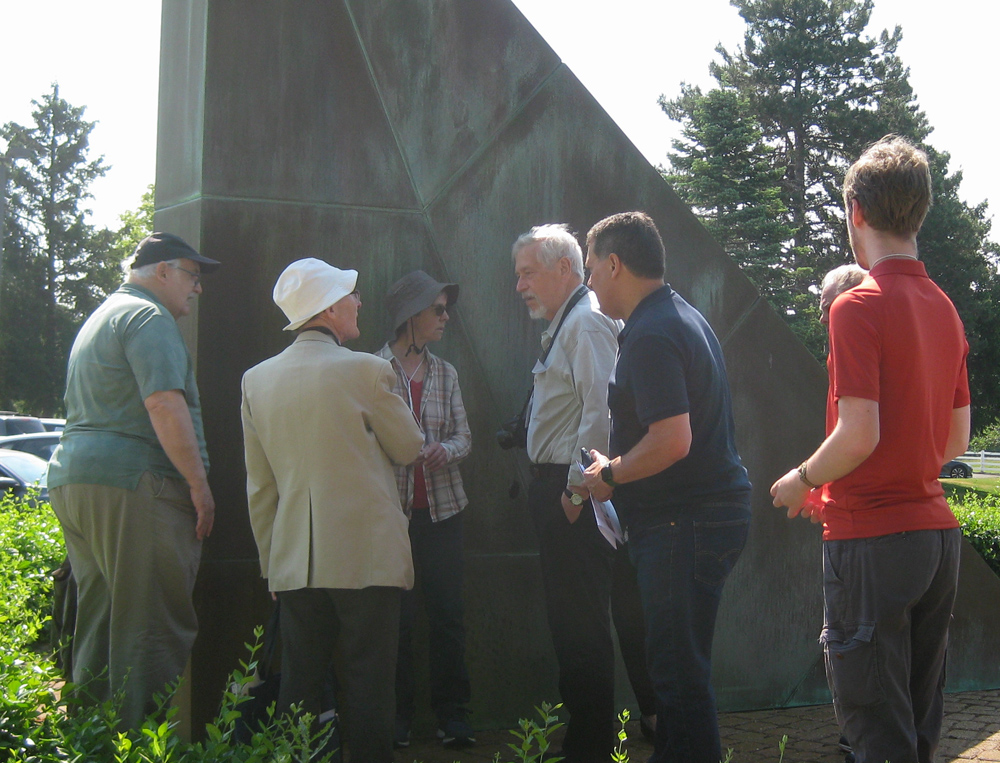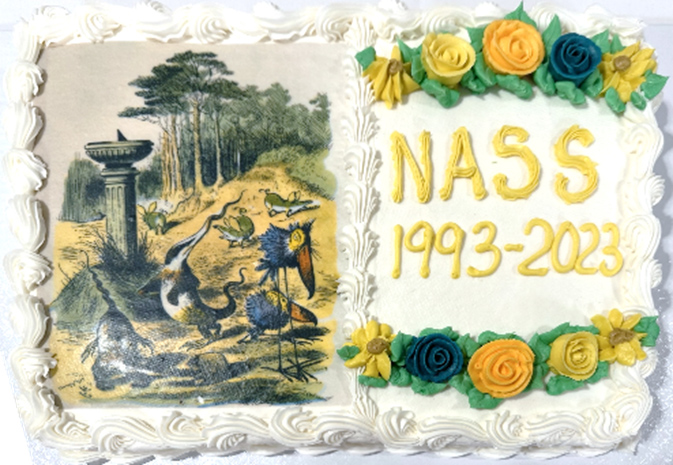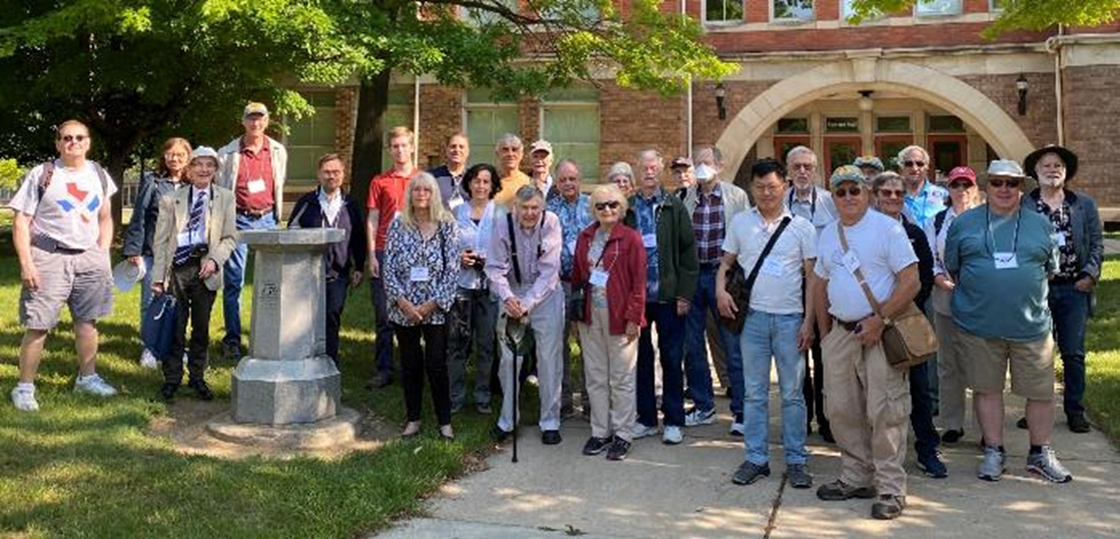
 The 28th annual meeting of the North American Sundial Society was held in Ann Arbor, MI from Jun3 8-11, celebrating 30 years of NASS. The conference began Thursday night with a social event of meeting old friends, exchanging sundial stories and a set of sundial related door prizes. On Friday dialists made the traditional sundial tour, with the first stop at Eastern Michigan University’s Sherzer Observatory. Here Thad Weakley was reunited with a dial he had created some 20 years earlier. Among others, we saw the large horizontal dial (NASS #1084) at the Domino’s Pizza Headquarters, the interior cylindrical dial (#1084) at Michigan Memorial Phoenix Laboratory, and the Trebble Clef sundial at the Univ. of Michigan’s School of Music (#335).
The 28th annual meeting of the North American Sundial Society was held in Ann Arbor, MI from Jun3 8-11, celebrating 30 years of NASS. The conference began Thursday night with a social event of meeting old friends, exchanging sundial stories and a set of sundial related door prizes. On Friday dialists made the traditional sundial tour, with the first stop at Eastern Michigan University’s Sherzer Observatory. Here Thad Weakley was reunited with a dial he had created some 20 years earlier. Among others, we saw the large horizontal dial (NASS #1084) at the Domino’s Pizza Headquarters, the interior cylindrical dial (#1084) at Michigan Memorial Phoenix Laboratory, and the Trebble Clef sundial at the Univ. of Michigan’s School of Music (#335).
On Saturday Fred Sawyer presented a sequel to his 2022 presentation on Time Boxes, with this year’s version being his new design of a bifilar Time Box. Delegates received templates for two dials – one showing conventional hours and one for Italian/Babylonian Hours. During the conference Fred Sawyer made several presentations on the bifilar sundial, including the biography of its inventor Hugo Michnik,
Mark Montgomery presented a historical review of lunar volvelles and their most common features with an explanation of their operation. He also discussed moon dials later in the conference.
Other presentations included Jack Aubert’s experience installing a simple vertical sundial on his house. Bob Kellogg discussed the 3D printing of the universal bifilar, which were later handed out at the conference dinner. Dung ‘Zoon’ Nguyen presented a brief history and theory of ceiling dials. Chip Cunningham reviewed his quest to understand solar time and presented his “Axial Dial” and Steve Lelievre talked about creating a unique vertical hour scale dial to tell the hours remaining until sunset. Steve’s second variant shows solar time from 6am to 6pm and was given to delegates as a conference gift.

Frank King delved into the layout of antique hour lines on the famous Queens Dial in Cambridge. The lines are drawn straight, but as Frank shows, they are part of a hyperbola. As the latitude approaches 67°, the lines develop a noticeable bend.
On Sunday, Frank King discused what happens if a highly polished gnomon is used for a planar dial. Depending on latitude and time of day, the usual shadows of a gnomon are accompanied by symmetrically-positioned bright equivalents.
Paul Ulrich’s talk returned us to the practicalities of making sundials. Paul presented a photo-catalog of a wonderfully diverse collection of usual and unusual dials in ceramic, metal, wood, string, card and other media. His emphasis was to “have fun with discovery.” Steve Lelievre describing his use of vector algebra in treating the outline of a (rectangular) window as a kind of bifilar sundial. And Steve Lelievre described his use of vector algebra in treating the outline of a (rectangular) window dual as a kind of bifilar sundial. The final talk was presented by Bob Kellogg and covered his work, in progress, to design and construct a tellurion (a mechanical model of the sun-earth-moon system).